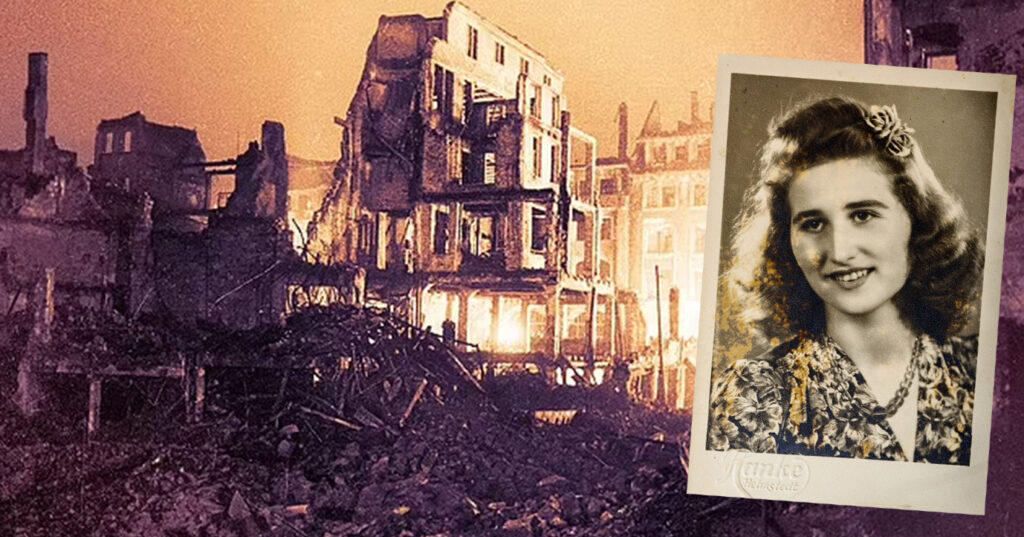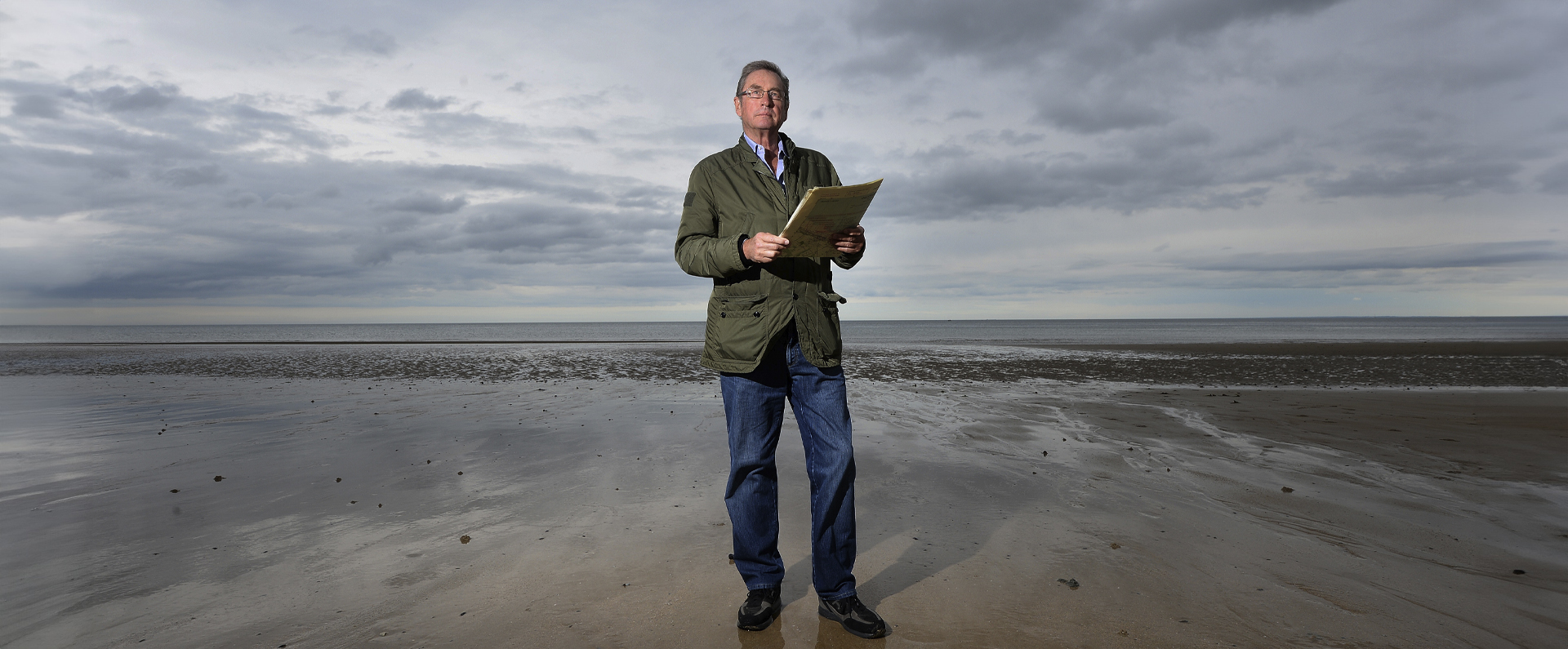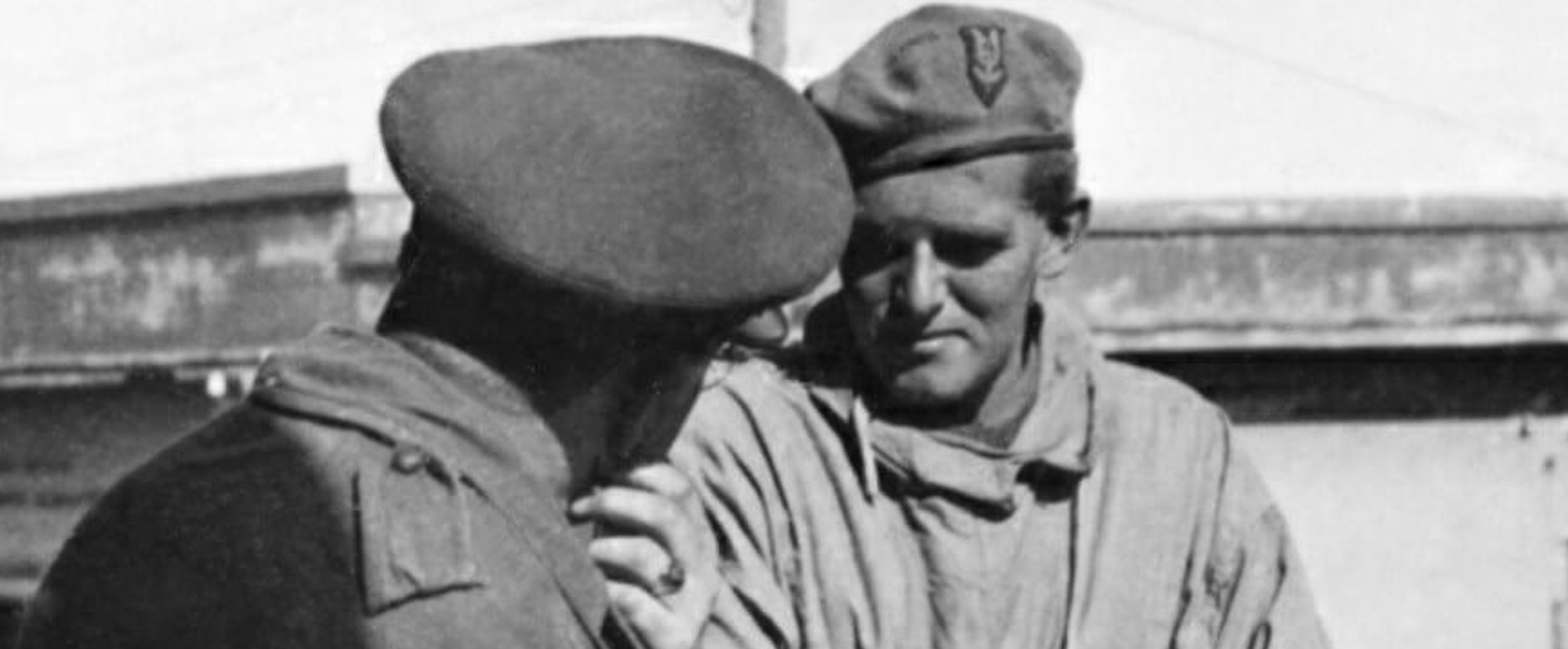
Published in The Mail On Sunday on 01 January 2023.
Now the moving story of Britain’s wartime heroine who turned up at her family’s doorstep three years after being declared dead is revealed by author and historian LORD ASHCROFT.
There is nothing in the wording of the memorial plaque at the North London crematorium that hints at her remarkable life or the tender post-war love affair that she shared with her husband.
The inscription simply reads: ‘In memory of wonderful parents Leslie Mould 31.8.19 – 28.3.15, devoted husband of Magdalene Mould 4.1.26 – 20.12.02. Reunited in love for eternity in God’s kingdom.’
Only now, on the 20th anniversary of Magdalene’s death, can her tenacity and courage be revealed, amid the horrors of Hitler’s Germany during the final year of the Second World War. And only now, with the assistance of the couple’s only child, Michael, can the moving story of his parents’ meeting and subsequent long marriage be told, also for the first time.
The tale begins during the inter-war years. Magdalene Ruth Brand was born on January 4, 1926, in Klein Lassowitz, near the German city of Breslau – now part of Poland and renamed Wroclaw.
A bright, lively, brown-eyed and fair-haired girl, the third-born of eight children, she initially enjoyed a happy childhood as part of a growing and prosperous family. Her father, Gustav, ran a successful building company. He lived with his wife Maria and the rest of their family in a spacious detached family house. They were Christians, first Catholics, but – after a falling-out with the Catholic Church – Gustav changed his loyalties to the Protestant faith.
When Magdalene – usually known as Magda – was 13, her family’s peaceful existence was transformed by Hitler’s invasion of Poland in the late summer of 1939. The invasion led to the rapid chain of events that resulted in the Second World War.
The Brands were vehemently opposed to Hitler’s fascism, his persecution of the Jews and his aggressive international expansionist plans, but after war broke out – like millions of other Germans – they felt they had to remain in their homeland. Fortunately, Gustav’s sons were too young to be conscripted, so for the first five years of the war, the family had no direct involvement in any of the fighting, either abroad or at home.
However, by the end of 1944, six months after the D-Day landings, Hitler’s forces were on the defensive, and in January 1945 the Russians invaded Germany.
Fierce fighting ensued. As Russian troops descended on Breslau, the Brands abandoned their home with just a few possessions in suitcases and headed to the Black Forest in southern Germany. Much of their journey was made on foot, with Gustav pushing his youngest child in a pram along the roads in a frantic search for safety.
Magda, though, who had just turned 19, did not follow her parents to the Black Forest. Instead, she went to the German city of Dresden, where she had a close friend and worked as an au pair.
As her parents and younger siblings continued their difficult and dangerous journey to the Black Forest, Maria and some of her children contracted typhoid, a bacterial infection. Gustav tried desperately to nurse them back to health, at one point seeking help from nuns in a convent, but his wife died. He was left a widower, homeless and with his five youngest children to care for.
Magda was unaware of her mother’s death or of her family’s whereabouts, but soon had major concerns of her own. On February 13, 1945, British heavy bombers began targeting Dresden. Over the next 48 hours, more than 1,000 British and US planes carried out relentless raids, killing about 25,000 people, mostly civilians.
Before the bombs fell on Dresden, residents were allocated a place in one of the many bomb shelters scattered around the city. Magda joined hundreds of other citizens in a huge underground shelter, next to the city’s main railway station. She was one of the last people into the packed shelter and therefore remained close to the exit – a chance happening that saved her life.
For, as the air raids intensified, a phosphorous bomb dropped through one of the shelter’s ventilation shafts. It exploded inside the shelter, creating an enormous fireball, and most people in the area were incinerated alive.
Nearly everyone in the shelter was killed – but somehow Magda managed to run to safety. Her son, Michael, said: ‘When the bomb exploded, someone threw a coat over my mother to protect her. Because she was so close to the exit door, she was able to scramble out. She ran through a firestorm and her hair was burnt off.
‘To her horror, she saw people who had jumped into a large fountain to escape the inferno but then boiled to death because the water soon became so hot. The scenes my mother saw were horrific. Some of the charred bodies of fully grown adults had shrunk down to only three or four feet long because of the extreme heat. How she managed to escape, I simply don’t know.
‘For the rest of her life, my mother could never watch films such as The Towering Inferno, which involved huge fires, because they’d bring back horrible memories.’
After the bombings stopped, it was not long before Dresden was under attack from advancing Russians. Many of them had a bitter hatred of the Germans, who had turned on their one-time allies, leading to the Battle of Stalingrad and other bloody confrontations.
In fact, Breslau, the Brands’ home city before their flight to the Black Forest, became the last stronghold of the Third Reich in the struggle against the invading Soviet forces.
Dubbed ‘Festung Breslau’ (‘Breslau Fortress’) by Hitler, it was the scene of a brutal three-month siege that cost the lives of up to 170,000 civilians, 6,000 German troops and 7,000 Russian soldiers.
Four days after Berlin’s fall, Dresden became the last German city to capitulate, on May 6, 1945. By then it was in ruins, with an estimated 70 per cent of its infrastructure destroyed. A day later, Germany surrendered.
Those German civilians who hadn’t been killed or evacuated were left at the mercy of the Red Army, for whom ‘liberating’ the city went hand-in-hand with murder, looting and rape, often under the influence of strong drink. At one point, Magda was seized by the Russians and held with hundreds of others at the city’s main cemetery. Soon, another prisoner, a German man in his 30s, persuaded her that he knew a way to escape.
That night, at about midnight, they made their way out of the cemetery into a nearby wood – but they had not gone far before they were stopped by a Russian patrol.
Rolling up the sleeve of the man’s jacket, a Russian soldier saw an SS number tattooed on his arm, drew his pistol and immediately shot him dead through the head.
Michael told me: ‘My mother said the man’s blood splattered all over her body and clothing but she was not harmed, with the Russians simply returning her to the cemetery.’
Magda is then believed to have remained captive for many weeks.
During the Russian occupation, there were stories of terrible atrocities. Whether Magda herself was the victim of any abuse, those close to her never knew.
Understandably, she was generally reluctant to talk about her experiences at the hands of the Russians in the early months of 1945. Any secrets she may have had, she took to her grave.
Shortly after the war in Europe ended, her father Gustav, still grieving from the loss of his wife, was sent a death certificate from the mayor of Dresden recording that Magda had been killed on February 13, 1945.
It was an understandable mistake: everyone known to have been in that particular shelter was assumed to have died.
Magda’s father, having moved to Alpirsbach in the Black Forest, now had two people to mourn: his wife and one of their daughters. In truth, though, during the early years after the war ended, Magda moved to Helmstedt in the German state of Lower Saxony, where she began to rebuild her life, taking a job as an assistant in a kindergarten.
One evening in early 1948, she went to a NAAFI dance. Here, she met a Briton, Leslie Mould, who had served during the Second World War in the rank of private with the Princess Louise’s Kensington Regiment.
He was eventually awarded the French decoration, the Legion d’Honneur, for helping to liberate the Normandy city of Caen in the summer of 1944.
By 1948, Leslie was working in the transport department of the Control Commission Germany (CCG). This consisted of British civil servants and military personnel who were responsible for public safety, health, transport and housing – while the CCG’s intelligence section helped round up Nazi sympathisers.
‘I guess it was love at first sight when my parents met,’ says Michael. ‘My father asked her to dance and they started dating. My father spoke a fair amount of German and my mother could speak fairly good English, so they were able to communicate. Within months of meeting, they were married.’
The couple got married in 13th Century St Stephani’s (St Stephen’s) Church in Helmstedt on October 2, 1948. They held a reception in the officers’ mess, where they and their guests dined on venison from deer hunted locally.
Afterwards, Leslie decided to see if he could track down his bride’s long-lost family. By now it was three years after the war, and Magda still did not know their whereabouts or if they were still alive.
With the assistance of the Red Cross, Leslie traced a man called Gustav Brand to an address in the Black Forest. Borrowing an army Jeep, he drove his new wife 400 miles to the man’s address.
There, Magda spotted her youngest brother, Ulrich, by then aged about eight, playing in the street. He did not recognise her.
‘Is your daddy home?’ she asked the young boy, speaking, of course, in German. The boy knocked on the door of his family home and shouted: ‘Daddy, there’s a strange lady asking for you.’
Gustav opened his front door and promptly fainted – for Magda, aged 22, looked the spitting image of her late mother and he thought she was the ghost of his dead wife.
While Gustav and the rest of the family were overjoyed to learn that Magda had not been killed, she was distraught at hearing that her mother had died from typhoid on the way to the Black Forest.
Shortly afterwards, the newly married couple returned to Britain to live in a house on an estate in North London.
They stayed in touch with their German family, always visiting them once a year, initially travelling by train and, later, by car.
For a few years, because of her nationality, Magda faced some hostility in North London from those who still clearly remembered the war. Yet the vast majority of people she got to know in her new community were supportive and welcoming, and she quickly made many friendships, some of which lasted throughout her lifetime.
For much of his life, Leslie worked for the Oxford University Press publishing company, first in its warehouse and then in its computer department. For a time, Magda worked for Selfridges in its export department.
Magda, perhaps partly because of her own traumatic teenage years, was exceptionally generous to people in need. Always house-proud and dressed immaculately, she donated to local charities and did other voluntary work to help the disabled, sick and poor.
She died on December 20, 2002, aged 76, after suffering from dementia in the final years of her life. She became one of few people in the world to be granted two death certificates, in her case fully 57 years apart. Her husband Leslie died on March 28, 2015, aged 95, after a short illness.
Both Leslie and Magda were private individuals and never wanted their story told publicly while still alive. However, their son, Michael, knowing about my interest in bravery and the military, wrote to me and has now allowed me to tell his parents’ touching story.
Michael told me: ‘I admired my parents very much and they did all they could for their only child. They were a devoted couple who met in the most unusual circumstances. They were wonderful people who were loving towards each other and to me. I am very proud of them and delighted that their story is now being told to a wider audience.’
Read this article on the DailyMail.co.uk
For more information, visit:
LordAshcroftOnBravery.com


